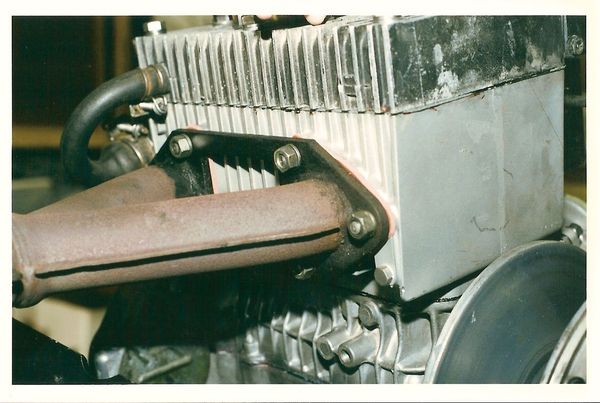jdsleds.com
-> Technical
Information -> Pressure Testing
Pressure testing a JD engine
By Patrick Scott (Harleysportster)
When rebuilding a 2 stroke engine with a burn-down or melted piston,
the engine should be pressure tested to assure the cause was
corrected
before putting the engine back in service. This test will check all
crankseals and all gaskets for a leak which could cause a lean
condition. This proceedure is explained in the JD service manuals and I
have built my own design of a tester using a automotive type compound
guage( pressure/vacuum) from Sears and a handheld brake bleeder pump,
for the air source. Here are pictures of the tester on my liquifire
engine and the article from the service manual. A small engine carb
leak detector can also be used, which is very similiar to the original
style tester in the service manuals.
List of equipment needed:
-Automotive vacuum/pressure gauge or carb leak detector if
using the carb tester, there is no need for automotive gauge or the
hand held pump below
-Hand held brake bleeder or controlled air source
-Sheet of rubber gasket material to fabricate block off gaskets
-1/8 inch rubber tubing, a few feet long
-Small piece of 3/16 or bigger flat stock
-1/8 inch adaptor for rubber hose
-!/8 inch tee fitting
Assemble
the hand pump to the bottom part of the tee fitting with a short piece
of hose and connect the gauge to one of the side fittings of the tee
with short length of hose and the other side of the tee gets connected
to the engine with a short piece of hose also . Pressurize the engine
by either pumping up the squeeze bulb or using the brake bleeder set up
for pressure.
You have to block off the exhaust manifold with a piece of rubber
between the manifold and head
When
testing a liquifire engine or a dual carb engine, you must test each
cylinder individually. A piece of flat stock was used with a hose
adapter to charge the cylinders individually.
When
testing a single carb engine, you only need to place a piece of rubber
between the carb mount and the intake to block off the flow and connect
the rubber air hose to the impulse line fitting in the crankcase. This
pressurizes both cylinders together, but if you want to test the center
seal, pressurize each cylinder individually as stated for the dual carb
set up.
Here is the liquifire engine hooked up and pressurized. The
engine was completely rebuild which had suffered a severe burn down.
To
use the tester, charge the cylinder to 7 psi and close off air source.
The gauge should not drop below 5 psi for at least 10 seconds. If gauge
drops to rapidly, open air source to maintain 7 psi and apply a water
and soap solution on the seals and gaskets to find the leak which will
bubble up. Once found, repair the problem before putting the engine
back in service.
